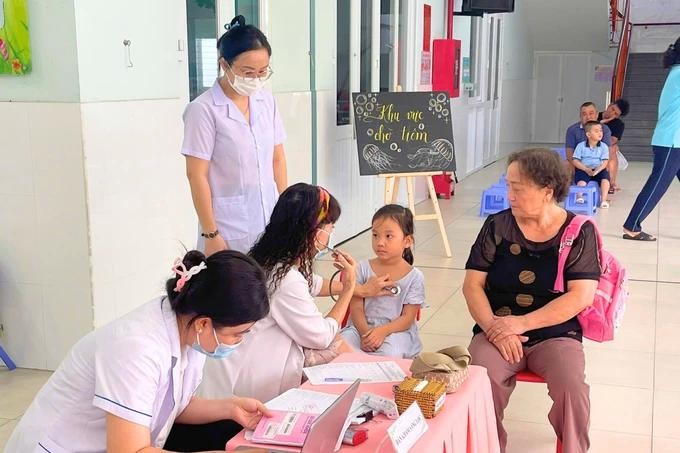
The Department of Education and Training of Ho Chi Minh City and the Social Insurance have just issued a joint document guiding the implementation of health insurance for students at schools in the southern largest city for the 2024-2025 school year. Most colleges and universities encourage students to have health insurance coverage.
Accordingly, those participating in health insurance are students studying at educational institutions in Ho Chi Minh City, except for those who have participated in health insurance according to other groups according to the provisions of the Law on Health Insurance and foreign students who are not granted scholarships from the budget of the State of Vietnam.
In case students have bought health insurance with other family members, they must switch to participating in student health insurance at their educational institution to receive deductions for primary health care costs.
For the 2024-2025 academic year, the health insurance premium for students is set at 4.5 percent of the base salary. The state budget contributes 30 percent of this amount, while students are responsible for covering 70 percent according to the actual months they participate.
Starting July 1, 2024, the fundamental salary will be set at VND2,340,000
Students register for health insurance and pay at the educational institution where they are studying at the beginning of the school year according to one of four payment options including three months, six months, nine months and 12 months. Students are recommended to participate in 12 month insurance coverage.
Educational institutions have the duty to encourage and remind students to pay their health insurance premiums as outlined in the management list or the list provided by the Social Insurance agency. They are also responsible for organizing the collection of these payments and ensuring that the funds are transferred to the Social Insurance agency in accordance with established regulations.
Students enroll in health insurance and make payments at their respective educational institutions at the start of the academic year, choosing from one of four payment options such as three months, 6 months, 9 months, or 12 months, with the 12-month option being highly recommended.
Educational institutions have the duty to encourage and remind students to pay their health insurance premiums as outlined in the management list or the list provided by the Social Insurance agency. They are also responsible for organizing the collection of these payments and ensuring that the funds are transferred to the Social Insurance agency in accordance with established regulations.
Students whose health insurance cards are set to expire in the remaining months of 2024, or who have not previously enrolled in health insurance, will only be required to pay premiums for the remaining months until December 31, 2024. Following this period, they will need to participate in health insurance for the entire year of 2025 using the aforementioned options.
Students from low-income households are eligible for local health insurance, which is subsidized by the state budget at a rate of 70 percent. If they have not enrolled in local health insurance, they have the option to join the student health insurance program offered at their schools.
A representative from the Ho Chi Minh City Department of Education and Training stated that they will collaborate with relevant departments, the city's Social Insurance, the People's Committee of Thu Duc City, and the 21 districts to implement comprehensive solutions. They will provide strong guidance to educational institutions to ensure that by the end of 2024, 100% of students and learners participate in health insurance.
Notably, the Department of Education and Training of Ho Chi Minh City will remind and urge educational institutions to implement the installation and use of the VssID application (Digital Social Insurance) in the area.
To achieve the aforementioned objectives, schools must enhance the widespread promotion of the humanitarian and community aspects of the health insurance policy. It is essential to communicate the responsibilities, obligations, and benefits associated with health insurance participation for students. Schools should distribute flyers and letters provided by the social insurance agency to every parent, aiming that 100 percent students buy health insurance.
























